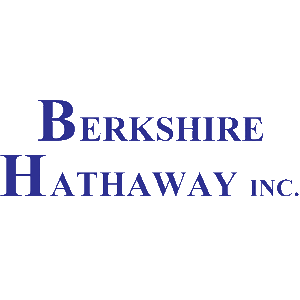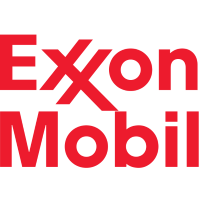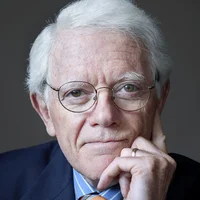
Summit Industrial Income REIT
TSX:SMU.UN

Summit Industrial Income REIT?

| US |

|
Johnson & Johnson
NYSE:JNJ
|
Pharmaceuticals
|
| US |

|
Berkshire Hathaway Inc
NYSE:BRK.A
|
Financial Services
|
| US |

|
Bank of America Corp
NYSE:BAC
|
Banking
|
| US |

|
Mastercard Inc
NYSE:MA
|
Technology
|
| US |

|
UnitedHealth Group Inc
NYSE:UNH
|
Health Care
|
| US |

|
Exxon Mobil Corp
NYSE:XOM
|
Energy
|
| US |

|
Pfizer Inc
NYSE:PFE
|
Pharmaceuticals
|
| US |

|
Palantir Technologies Inc
NYSE:PLTR
|
Technology
|
| US |

|
Nike Inc
NYSE:NKE
|
Textiles, Apparel & Luxury Goods
|
| US |

|
Visa Inc
NYSE:V
|
Technology
|
| CN |

|
Alibaba Group Holding Ltd
NYSE:BABA
|
Retail
|
| US |

|
JPMorgan Chase & Co
NYSE:JPM
|
Banking
|
| US |

|
Coca-Cola Co
NYSE:KO
|
Beverages
|
| US |

|
Walmart Inc
NYSE:WMT
|
Retail
|
| US |

|
Verizon Communications Inc
NYSE:VZ
|
Telecommunication
|
| US |

|
Chevron Corp
NYSE:CVX
|
Energy
|
We'll email you a reminder when the closing price reaches USD.
If you don’t study any companies, you have the same success buying stocks as you do in a poker game if you bet without looking at your cards.

Utilize notes to systematically review your investment decisions. By reflecting on past outcomes, you can discern effective strategies and identify those that underperformed. This continuous feedback loop enables you to adapt and refine your approach, optimizing for future success.
Each note serves as a learning point, offering insights into your decision-making processes. Over time, you'll accumulate a personalized database of knowledge, enhancing your ability to make informed decisions quickly and effectively.
With a comprehensive record of your investment history at your fingertips, you can compare current opportunities against past experiences. This not only bolsters your confidence but also ensures that each decision is grounded in a well-documented rationale.
Do you really want to delete this note?
This action cannot be undone.

| 52 Week Range |
N/A
N/A
|
| Price Target |
|
We'll email you a reminder when the closing price reaches CAD.
Choose the stock you wish to monitor with a price alert.

|
Johnson & Johnson
NYSE:JNJ
|
US |

|
Berkshire Hathaway Inc
NYSE:BRK.A
|
US |

|
Bank of America Corp
NYSE:BAC
|
US |

|
Mastercard Inc
NYSE:MA
|
US |

|
UnitedHealth Group Inc
NYSE:UNH
|
US |

|
Exxon Mobil Corp
NYSE:XOM
|
US |

|
Pfizer Inc
NYSE:PFE
|
US |

|
Palantir Technologies Inc
NYSE:PLTR
|
US |

|
Nike Inc
NYSE:NKE
|
US |

|
Visa Inc
NYSE:V
|
US |

|
Alibaba Group Holding Ltd
NYSE:BABA
|
CN |

|
JPMorgan Chase & Co
NYSE:JPM
|
US |

|
Coca-Cola Co
NYSE:KO
|
US |

|
Walmart Inc
NYSE:WMT
|
US |

|
Verizon Communications Inc
NYSE:VZ
|
US |

|
Chevron Corp
NYSE:CVX
|
US |
This alert will be permanently deleted.
 Summit Industrial Income REIT
Summit Industrial Income REIT
What unique competitive advantages
does Summit Industrial Income REIT hold over its rivals?
What risks and challenges
does Summit Industrial Income REIT face in the near future?
Provide an overview of the primary business activities
of Summit Industrial Income REIT.
Show me price targets
for Summit Industrial Income REIT made by professional analysts.
Provide an overview of the primary business activities
of Summit Industrial Income REIT.
What unique competitive advantages
does Summit Industrial Income REIT hold over its rivals?
What risks and challenges
does Summit Industrial Income REIT face in the near future?
Summarize the latest earnings call
of Summit Industrial Income REIT.
Show all valuation multiples
for Summit Industrial Income REIT.
Provide P/S
for Summit Industrial Income REIT.
Provide P/E
for Summit Industrial Income REIT.
Provide P/OCF
for Summit Industrial Income REIT.
Provide P/FCFE
for Summit Industrial Income REIT.
Provide P/B
for Summit Industrial Income REIT.
Provide EV/S
for Summit Industrial Income REIT.
Provide EV/GP
for Summit Industrial Income REIT.
Provide EV/EBITDA
for Summit Industrial Income REIT.
Provide EV/EBIT
for Summit Industrial Income REIT.
Provide EV/OCF
for Summit Industrial Income REIT.
Provide EV/FCFF
for Summit Industrial Income REIT.
Provide EV/IC
for Summit Industrial Income REIT.
Show me price targets
for Summit Industrial Income REIT made by professional analysts.
What are the Revenue projections
for Summit Industrial Income REIT?
How accurate were the past Revenue estimates
for Summit Industrial Income REIT?
What are the Net Income projections
for Summit Industrial Income REIT?
How accurate were the past Net Income estimates
for Summit Industrial Income REIT?
What are the EPS projections
for Summit Industrial Income REIT?
How accurate were the past EPS estimates
for Summit Industrial Income REIT?
What are the EBIT projections
for Summit Industrial Income REIT?
How accurate were the past EBIT estimates
for Summit Industrial Income REIT?
Compare the revenue forecasts
for Summit Industrial Income REIT with those of its competitors based on recent analyst estimates.
Compare the intrinsic valuations
of Summit Industrial Income REIT and its key competitors using the latest financial data.
Compare historical revenue growth rates
of Summit Industrial Income REIT against its competitors.
Analyze the profit margins
(gross, operating, and net) of Summit Industrial Income REIT compared to its peers.
Compare the P/E ratios
of Summit Industrial Income REIT against its peers.
Discuss the investment returns and shareholder value creation
comparing Summit Industrial Income REIT with its peers.
Analyze the financial leverage
of Summit Industrial Income REIT compared to its main competitors.
Show all profitability ratios
for Summit Industrial Income REIT.
Provide ROE
for Summit Industrial Income REIT.
Provide ROA
for Summit Industrial Income REIT.
Provide ROIC
for Summit Industrial Income REIT.
Provide ROCE
for Summit Industrial Income REIT.
Provide Gross Margin
for Summit Industrial Income REIT.
Provide Operating Margin
for Summit Industrial Income REIT.
Provide Net Margin
for Summit Industrial Income REIT.
Provide FCF Margin
for Summit Industrial Income REIT.
Show all solvency ratios
for Summit Industrial Income REIT.
Provide D/E Ratio
for Summit Industrial Income REIT.
Provide D/A Ratio
for Summit Industrial Income REIT.
Provide Interest Coverage Ratio
for Summit Industrial Income REIT.
Provide Altman Z-Score Ratio
for Summit Industrial Income REIT.
Provide Quick Ratio
for Summit Industrial Income REIT.
Provide Current Ratio
for Summit Industrial Income REIT.
Provide Cash Ratio
for Summit Industrial Income REIT.
What is the historical Revenue growth
over the last 5 years for Summit Industrial Income REIT?
What is the historical Net Income growth
over the last 5 years for Summit Industrial Income REIT?
What is the current Free Cash Flow
of Summit Industrial Income REIT?
Discuss the annual earnings per share (EPS)
trend over the past five years for Summit Industrial Income REIT.

























 You don't have any saved screeners yet
You don't have any saved screeners yet

Good morning, ladies and gentlemen. Welcome to the Summit REIT Third Quarter 2018 Results Conference Call. Please be advised that this call is being recorded on Wednesday, November 7, 2018.I would now like to turn the meeting over to Mr. Paul Dykeman, Chief Executive Officer. Please go ahead.
Thank you, operator. Good morning, and thank you for joining us today. As usual, joining me here is Ross Drake, our Chief Financial Officer.Before we begin, let me remind everyone that during this conference call, we may make statements containing forward-looking information. This forward-looking information is based on a number of assumptions and is subject to a number of known and unknown risks and uncertainties that could cause actual results to differ materially from those disclosed or implied. I direct you to our earnings release, MD&A and other security filings for additional information about these assumptions, risks and uncertainties.The third quarter of 2018 was another successful and busy period for Summit. We continued to benefit from our portfolio growth as well as strong organic growth due to our high stable occupancy and further increasing monthly rents. We were also very active with our leasing activities, completing all of the remaining 2018 expiries and making significant progress on the 2019 expiries. And I'll have more to say on those shortly.Over the last 12 months, we've acquired a total of 29 properties, for a total purchase price of $447 million. This portfolio growth was funded by equity offers in June and December last year as well as on June 15 this year, raising net proceeds of approximately $275 million and an additional $270 million in new and assumed debt financings. In total, these acquisitions generated a very healthy going-in cap rate of 5.9%.We're also pleased that, for the first time, we're able to utilize units to partially fund 2 acquisitions this year. The fact that vendors took back a total of 4.3 million Class B units is a testament to our promising future.The portfolio currently stands at 92 properties, including the purchase of a GTA property last month, now totaling 10.3 million square feet of gross leasable area. Total assets including this recent acquisitions will grow to approximately $1.4 billion, which is almost doubling the place we were in September of 2017.During the second quarter, we completed the sale of 75% interest in 4 noncore properties, mostly located outside our target geographic markets. The sale generated a $46.4 million in net proceeds and a realized gain of $7.2 million. As a result, we did a special distribution of $0.018 per unit paid in May of 2018, which is another example of our commitment to continue to enhance unitholder value by recycling capital.Our focus on the vibrant greater Toronto and greater Montreal market continues, allowing us to capitalize on very strong fundamentals in these markets. Both are experiencing all-time low availability in vacancy rates, with absorption outpacing new supply as well as capturing increasing property efficiencies and economy of scales as our portfolio continues to grow that critical mass.As a result, our same-property NOI growth in the GTA metro is very strong this year, with the GTA up 5% and Montreal rising 5.9% for the first 9 months of 2018. And both those markets now represent about 80% of our total portfolio as of September 30.The strong fundamentals in these 2 key geographic markets, as well as the increase in the value resulting from our full leasing of the Data Center 1 in Toronto, contributed to a $94 million fair market value gain on our portfolio year-to-date, which equates to $1.27 per unit. And despite our significant growth over the last 12 months, we continue to maintain a strong and conservative balance sheet, with low debt coverage ratios and flexibility with resources to maintain our growth going forward.As I mentioned, we have been very successful in our leasing activities in the last 2 months. At quarter end, all 2018 lease renewals have been completed at a very strong 93.3% retention ratio and generating a 9.5% increase in monthly rents on those renewals. In the GTA, the renewals saw a significant 12.4% increase on average, again underlying the strength of this market and why we've been focusing on this region.We've also made significant progress in proactively completing renewals for space expiring in 2019 and also for an early renewal of a lease expiring in 2023. Net tenant that's expiring in 2023, they're adding another 50,000 square feet of an adjacent space. Net renewals, including that expansion, is increasing the rents by 20%. And that's going to begin in 2019, almost 4 years ahead of when their lease would've expired.With these transactions, only 6% of our portfolio now has lease renewals remaining for 2019. The renewals completed to date in 2019 have resulted in the 9.6% increase in rents, with even a stronger improvement in GTA of 15.6%. So when you combine both the 2018 and 2019 lease renewals and expansions, it just totals over 1 million square feet, which generated just under 10%, 9.6% in rental increase and a combined rental increase in the GTA properties of 14.1%.Importantly, by year-end 2018, all our vacancy in our Western properties will be fully leased, including a 25,000-square foot vacancy that was in place when we acquired a Calgary property in July. And just by doing that one lease, it increases the yield from a little under 6% to 6.9% on that acquisition, so a very accretive acquisition. With these vacancies leased, occupancy in the portfolio will rise to over 99%, so 99.3%, which is up from 98.1% at December 31, 2017. We're also pleased that effective October 1, 100% of our first data center, DC1 in Montreal, is now leased and generating accretive yield of over 10% on cost.In summary. Following another record year in 2017, our strong performance continues through the first 9 months of 2018. And we look for this to continue.I'll turn Ross over to go through some of the operating results in detail.
Thanks, Paul.As Paul mentioned, a significant increase in the size of our property portfolio over the last 12 months has had a very positive impact on our results through first 9 months of 2018. Revenues were up 57%, the result of the contribution from our acquisitions, continuing near-full occupancy and higher monthly rents, partially offset by the sale of the 75% interest in 4 properties in May.Looking ahead, our current 1.6% annual contractual rent increases will contribute to our organic revenue growth going forward. With this revenue growth and our continuing focus on efficient property management, NOI was up just over 60% through the first 9 months of 2018.For the quarter, revenues rose 56%, generating a 61% increase in NOI compared to last year. We were also pleased to once again generate solid increases in our same-property NOI. For the 9 months ended September 30, total organic growth was 1.5%, with the GTA up 5% and Montreal rising 5.9% as Paul mentioned.With the increase in revenue and NOI, our FFO grows a very strong 61% to $30.9 million for the 9 months ended September 30, up from $19.2 million last year. FFO in the third quarter increased 61.5% to $11.7 million. Our per-unit amount and payout ratios were impacted by the amount and timing of the equity offering used to finance our growth. In total, our equity offers over the last 12 months, including the 4.3 million Class B exchangeable units issued for 2 of our property acquisitions have resulted in a 64% increase in the weighted average number of units outstanding through the 9 months ended September 30, 2018. We look for a return to accretive growth in FFO and more conservative payout ratios in the coming quarters, as the funds from our recent equity offerings are fully invested.Our balance sheet and liquidity position remained strong at September 30, with leverage only 44.4%, providing an immediate $210 million in acquisition capacity if we could bring the ratio up to our general target of 50%. We have lowered the leverage target to operate around 50%.We made significant progress on the financing front so far this year, capitalizing on current low interest rates and extending the average term of the mortgage portfolio, thus helping to mitigate the impact of rising rates going forward.Through the first 9 months of 2018, we completed just under $190 in new financing, with approximately $90 million in the third quarter. Average interest rates for these new financings came in at 4%, mostly with 7- to 10-year terms and averaging 8.4 years. With these transactions, we have locked in longer-term mortgages in this rising rate environment and added a full year average term to maturity for the portfolio pool compared to last year. And with these financing activities, our weighted average effective interest rate remained a low 3.72% at September 30, with an increased weighted average term to maturity to 5.3 years.Debt service and interest coverage ratios also remained strong and stable at quarter end. And our mortgage portfolio remains well balanced over the next few years. Total assets rose to over $1.3 billion as of September 30, the result of our accelerated property portfolio growth and including the $94 million in fair value gain arising primarily from increased market values in our GTA and Montreal portfolios.As Paul mentioned, it was another strong quarter for Summit. And we expect this growth and solid performance to continue going forward.Thank you for your time this morning. And I'll turn things back to Paul to wrap up.
Thanks, Ross.So looking ahead, we believe the significant increase in the size and scale of our portfolio will bring significant lasting benefits to our unitholders over the long term. First, the accelerated pace of our portfolio growth will continue to generate very strong and accretive increases in our results, as we realize the full year's contribution from these new properties.We also expect to continue the pace of our accelerated portfolio growth, financed by a recent equity offering and also the recycling of our capital generated from our main property sales. Our pipeline of potential acquisitions remains very strong. We're evaluating a number of new opportunities that will add to our cash flows in the coming quarters.We believe our organic growth will continue as we capitalize on the very strong fundamentals in the light industrial sectors. Our properties are essentially fully occupied, and we have built in 1.6% annual escalation in monthly rents. And this will add to the stability and sustainability of our cash flows going forward. Additionally, the strong rent increases that we're achieving on our recent lease deals, particularly on the GTA and Montreal, will contribute strongly to that organic growth for the years upcoming.Finally, we'll continue to leverage our network of joint venture partners to acquire new properties as well as additional development and redevelopment projects. We believe this will see more of these innovative growth programs, given our size in the quarters ahead.In summary, look forward for another record year in 2018, with the continued strong industry fundamentals, best-in-class properties and a proven management team that has decades of experience. We believe we are well positioned to continually increase value for our unitholders over time.I thank you for your time this morning. And now I'd be happy to take any questions you may have. Operator?
[Operator Instructions] The first question is from Chris Couprie of CIBC.
Just a quick question for you on organic growth. Obviously, we had the impact of lapping some vacancies in Western Canada this quarter. Can you maybe talk about just your organic outlook going forward? Would you characterize this quarter as potentially the trough? And just in terms of the renewals that you're doing, what type of annual escalators are you able to get right now?
Sure. And I'll answer that, because if Ross answers, he'll be a little more conservative than I would be. Clearly, I know same-store NOI is a good indicator. I felt our portfolio has changed quite a bit. So I don't watch that as much. But I think 2019 we’ll see some very interesting results. Because I think same-store NOI is going to represent a higher percentage, 75% to 80% of the portfolio. Now that you finally have the drag from those Western properties finished, I think you're going to start to see these rental growths that we've seen in the GTA start to kick in. So same-store -- I'm not going to point to a number, but it's going to be much stronger in 2019 than what you're seeing here. So we're very optimistic about that. And I don't see the end of this runway. We're starting to look at a couple small developments on-balance sheet. When we start to look at the development charges, the whole cost -- and we think we have reasonable price of land that's under $1 million an acre -- your still replacement costs are minimum of $150 a square foot, if not more. So we think economic rents are a minimum of $8, and we see that growing even firmer. So $8, $9 and $10 rents. So we're getting nice, comfortable 15% to 20% bumps on our renewals in the GTA. Most tenants are now getting that, the brokers are getting that. So it's becoming, I won't say easier and easier, but that's doing that. So the only time -- if a tenant is saying "I can't absorb a 20% bump," we tend to try to then get higher annual bump. So if we're getting a good, solid bump, like 20%, then a 2% increase thereafter would be probably the target. If for whatever reason there is one tenant that we felt that their business would struggle with that, so we bumped it more like 10%, but then we're getting 3% to 4% increases. So you're going to try to capture that total increase in rent over 5 years. And very interesting environment. There's some tenants that -- not sure what they want to do. And they're happy to renew for just 1 year, and we're saying sure. So there's no cost to doing that. There's not a lot of those, but there's a few. Because we were very, very convinced, if they're going from -- this one was $5.30, going up to $6.50 for 1 year -- we're very confident that, that $6.50 is even going to be higher. So we're moving rents from the low and mid $5s into the mid $6s, and then in a couple cases over $7. So we still think, even the rents that were in the $6.50s, they're still going to be more runway if those either renew or roll over the next time. So very optimistic in Toronto. And now we're starting to see some of that same mechanics, not as aggressive in Montreal but as healthy. The rents in Montreal were never even as weak as they were in Toronto. But we're seeing some of the same strengthening there, particularly in the properties that are 24-foot, clear, decent product, well located. The old stuff still has more vacancy, and the rental rates are not as strong in those.
So the tenant that early renewed, the 2023 tenant, was that GTA?
Yes, that's a GTA into adjacent space. And very interesting, the tenant -- on the outset, the tenant that was in there who didn't have an option really wanted to stay, so we kind of had them bidding off against each other. And now we have another lease the middle of next year that a tenant who bought their own building is going to leave. The tenant that we were going to kick out can't find a space anywhere, so he's now looking at that space. And that's going to be a rent that starts at over $7. So the surprising thing -- and this tenant did a 12-year, doubling the size of the space, 12-year deal, bumping the rent by 20%. Surprisingly, we were able to get the rent that doesn't expire for 4 years to be bumped up, is contiguous with the other one in 2019. So essentially, they, I won't say volunteered, but they agreed to a rental increase on their existing space 4 years premature. So they're ordering in equipment. They couldn't have the uncertainty of not having that space. So they stepped up.
And are you having more early renewal discussions with your tenants in general?
Yes. Yes, there's -- well, there's a mixture. So some that get it and really know they need the space are doing that. And then you have a few examples of the ones that really don't know what we're going to do, we're not sure if we're going to be able to handle these increased rents. Because some of them are on the logistics firms they already have like fixed-price contracts. So any rental increases hits their bottom line. So they're still trying to struggle to figure out how they can roll through some of these increasing rents into their contracts over time. So there's still a little bounce-around. But if a tenant has more than 50,000 square feet requirement, you have very, very limited options. And we're not seeing -- I think there's -- I saw the last numbers, 5 million or 6 million square feet being developed in the GTA that's not even being able to maintain even the growth that's less than 1% of the inventory.
The following question is from Brad Sturges of Industrial Alliance.
As you highlighted, you've got still quite a bit of acquisition capacity from the last capital raise. Just wanted to get an update in terms of what you're seeing in the market in terms of opportunity, and maybe at least current expectations for capital deployment?
Actually, the pipeline is probably as full as we've seen it in the last at least couple of years. So I think there's different funds that are rationalizing portfolios. There's people that have added value. There's probably people looking at interest rates saying, okay, maybe this cap rate compression may not be [ allowed ]. So we're seeing an increasing number of properties. So we're confident before year-end we'll have the June use for proceeds fully earmarked to bring our leverage back up. And Ross had mentioned we're kind of resetting our leverage target. So before, it was more in the mid-50s; now it's around 50. So I don't think you'll see our leverage share go up much more than 50. So we think we can invest those proceeds very, very competitive in the GTA. We've lost out on a few projects where buyers are ignoring current yields and just looking at a price per square foot. So we've lost out on a couple deals. There was another one that was on leased land, a larger deal over $100 million that we passed on, because the guidance was low to mid-4 cap on leased land, with like [ 46 years ] left. So there's still compression, there's tightness, and there's lots of capital chasing that. And interestingly, that's even migrated a little bit to Montreal. I think last quarter, talked about the portfolio that was traded there at about 4.5 cap in Montreal. And we're continuing to see cap rates firm there. There's been some more portfolios out in the market and coming out shortly in Calgary. And cap rates have again compressed there. So everywhere we're looking, pricing is tight. So we're trying to balance that, getting good opportunities with good price per square foot versus current yield and making the whole program accretive. But we're very confident we're going to be able to fully deploy that capital in the next 60 days.
And within that pipeline, because you've highlighted all your target markets, is Toronto still the largest concentration of opportunity right now?
Toronto and Montreal, those 2 marketplaces, going. More and more, some portfolios in the West -- there's one that's coming that has a GTA component, a GTA West component in Ottawa. So it's a bit of a mixture of a few things. And again, our goal all along has been to try to maintain the allocations we currently have, so the 60% in Toronto, 20% in Montreal; but the two of those markets together at 80%. So those are still our strongest market. And Toronto, we have to be very creative. We did a couple deals where vendors took back Class B units. And that helped them with tax planning and different things there. So we're able to get some deals like that that are off-market. We're looking at certain tenants that are doing sale leasebacks. They think it's a good opportunity to extract some capital and put that into the core business. And usually, they -- we've had a lot of success in the sale leasebacks, because they tend to like us as a landlord. So it's not just selling and getting the best price; they have to have that relationship with us going forward.
And lastly just I think you touched on the potential for some modest amount of capital recycling. Any revised thoughts on that? I mean, obviously, the focus with you, to deploy capital first. But beyond that, could we see some capital recycling?
Don't mind saying this -- at our board meeting, we talked about that. And they said if there's ever a time where you wanted to look at doing capital recycling, now is it. So each quarter, we'll go through the portfolio. Off the top of my head, there's not a tremendous amount. So we finally leased up that last little property in DC. The 2 properties combined out there are $5 million or $6 million, $4 million, $5 million, $6 million. So we'll definitely be trying to sell those. There's a couple other ones that we were looking at selling. And earlier there, we renewed the tenants there. So there's modest amounts. So that add up to $10 million to $20 million, something like that. It's nothing bigger than that, I don't think.
The following question is from Troy MacLean with BMO Capital Markets.
Just with your increased size and where cap rates are at in the market, would you look at doing more value-add investment? Like even something like buying a vacant building in Calgary or Edmonton to kind of get a higher return?
Yes. The answer is absolutely. You can find them in Edmonton, you can't find them everywhere else. I mean, Calgary is shockingly -- there's a shocking amount of development going on out there. So that's how much that market has rebounded. But we're looking at -- we've bought some properties recently in Calgary that developers are continuing to build. So we'll look at, whether we do it ourselves or in joint venture with our partners, the same thing in Montreal. We're always looking for those unique opportunities. I think even Montreal is poised to start to see some spec development. Reading reports recently, and the vacancy number continues to slip again on the quality properties, so we'll do that. The 2 pieces of land that we do own -- we've been working on that. We've got the preliminary designs. As I said, the costing was coming in higher than we thought. But I'm optimistic that the rents are going to come in higher than what they would've been even 6 months ago. The delivery times for development in Montreal are -- I'm sorry, in Toronto, is slow. So the city has been challenging to try to work through all of the demands that they have. So we've got our 2 projects. We already got interest from tenants in our projects or interest from tenants outside. So we'll start to build those. The construction won't start until probably the middle of next year. So yes, any time like that. But we are looking for other even raw land as well, Troy, so anything we can do there. So that's kind of the natural evolution, and that's what we did in Summit I. So to the extent we can do it with partners and do mezz loans, we'll do that. But we'll start to increase the amount that we're going to do on our balance sheet as well. So we're starting on with these 2 projects, which is about 250,000 square feet between the two of them. So it's still not a crazy big program. But as we grow, that program will just continue to increase. Because really, the only way you can -- and what we've done, we've done 3 examples this year of properties where we bought one in July in Calgary at a 5.8% cap. But once we leased that final vacancy, it went up to 6.9%. The one in Matheson that we bought last December, we've just leased that out. And that's going to be roughly the same numbers to go to 6.8% yield. So yes, trying to enhance those yields by finding those unique opportunities. We've got 4 vacancies left in our portfolio. Three of them, we're in the end of negotiations for those. So those will all be committed before year-end. So we're down to that -- we'll have one vacancy by December 31, and that property we bought in Humberline, where we've gone into the city. And now it's 10 months or 12 months later, and they still haven't given us the variance to put some loading doors in the front of the building. But we've got the existing tenants in the building interested in that. Some of them might even be able to make do without having those loading doors. But the hearings and the work that the city's making you do just to make a small variance on your building is proving to be onerous. But once we lease that space, that will be almost a 7% yield once that space is leased. Because we originally forecasted low rents of $3 to $4, and now we're probably $5 to $6 in that particular space.
Just given the cap rate compression in kind of your target markets, would you -- have you thought of like looking at a Winnipeg or a Halifax to get maybe a better yield on some [ more ] enhanced yield on some of the acquisitions? Or you still want to stay in like kind of Calgary, Montreal, Toronto and Edmonton?
I can give you a nice, long complicated answer. But the quick answer is no. We're not going there. So we did that the first time in Summit, call it chasing yield. We were never able to -- and again, we talked about all that in our strategic planning session over the last couple days. You just can't get the market penetration in either one of those markets. Halifax is very small, obviously. We know it, we know it well. But you can't ever get to that critical mass. Same thing in Winnipeg. So the key is we found from the first Summit, if you're going to go into markets, they need to be deep, they need to be liquid. So we're completely happy with our geographic allocation and don't see much change in that. Like I said, there's a portfolio out there that has a component of Ottawa. So again, if some geographic diversification comes as part of a portfolio acquisition, we'd consider that. And then we might sell down that position in a city that we don't want to be our prime target.
And then, just finally -- when you mentioned the 2 development projects you have going, when you're looking at putting money to work in development, what kind of development spread versus the market cap rate are you targeting? And any potential change in that?
Well, that's almost impossible to answer. Because, first of all, I'd have to ask what is our market cap rate. I mean, we've seen cap rates below 4% for a brand new building. So I don't know what a market cap rate would be for a brand new development. But there's definitely -- there's a development yield. But as I mentioned, I think I would've said earlier, when we first bought those pieces of land, $130, $140. I think that number is now $150 to $160, given the extra amount of time it takes to go through the permitting process. The development charges continue almost on a regular basis to go up, so $150, $160. So you're still -- you're probably in the mid 5% yield. But my thought is we're [ preforming ], call it, $8 to $8.50 rents. But I wouldn't be at all surprised when this product is ready to come to the market. I don't think you would try to do preleasing; I think you'd wait until it's almost built to lease it out. Because I think rental rates in 2 years for brand new buildings, I would not be surprised, are close to $10. That's my prediction of the day.
So you think rents in Toronto will be higher than Calgary and Edmonton in a couple years?
No, I think they'll be -- I think Calgary and Edmonton -- or Calgary right now, they are getting rents from $9 to $11. So obviously, their cost to bringing property to market is less than Toronto. But what I still see is that replacement cost, it just has strong drivers to grow that replacement cost above normal growth rates that you would expect. So I don't know what it's going to be. But land costs are just through [ the roof ]. So we bought our land at $1 million. Good luck trying to find -- or $900,000 an acre. Good luck trying to find that. So you're at 1.3, 1.5, 1.6. And development charges sometimes are going up more than once a year. So that replacement cost has a lot of pressure on it to go up. And clearly, there's a significant underservicing in the GTA to build. Everything is right to be a landlord. We're happy to continue to own a large portfolio in Toronto.
The following question is from Matt Logan of RBC Capital Markets.
In terms of lease renewals, can you give us some color on how we should be thinking about the relative strength of the GTA, Montreal and Western Canada; and just where the overall renewal spreads are likely to blend out over the next year or 2?
Well, first of all, we don't have a lot in the West, so it's not going to be very relevant. So the main thing there was just getting our vacancies finally leased and kind of stabilize that situation. But as I mentioned, on new developments, we just did the one -- I don't know if I can say the tenant name. Anyhow, it's a government entity leased at 27,000 square feet in Calgary. And I think, Ross, the rents start at $9? And that's [ lead ] to over $11. So that's still very healthy rents. So there's very few projects in Calgary that would have rents dramatically above that. So I think that's healthy. The GTA is the only unknown. But that tenant that -- they were paying $5 in Toronto, we asked them to bid. They thought $5.50 was an aggressive number. We ended up leasing it to the other tenant for $6.25. And now that same tenant has come back desperate for space and just agreed to a $7.20 rent in another space. So it's bringing those tenants along. So our average in-place rent is starting to creep towards high 5s now. I think market rents in Toronto are -- if they're not at $7, they're very close to $7. And so I still think there's that spread, so another 15%. But there's so much pressure on market rents. So I think we'll get good quality properties in the right place. And clearly, the largest spaces are the ones that are harder to get into. So I think I see that runway for several, several years. Because I just don't see the supply-demand dynamic changing a whole lot. Montreal is a little bit more of a mystery, just because I don't see the same pressures in Montreal in replacement costs. So the odd thing, what I'm not seeing or feeling Montreal yet, is why isn't there a lot more spec development. Because rental rates are reasonably strong, so you can get $6.50 to $7 rents in Montreal. And you could build for significantly less than the 150 you could in Toronto. So why aren't more people building there yet? So I would speculate that there's going to be some more spec building start in Montreal. So the rental rates there, roughly the same thing. I think in Montreal, we're around $6. I think, clearly, rents are pushing toward 7$. So kind of moving from that $6 to $7 is kind of where I think the room is in the next couple years. But I think the $7, particularly in Toronto, has definitely lots of room to go up. And again, when we talk Toronto, we just did a lease deal in Pickering for $7.25. And that's one of the hotter markets.
Definitely a lot of success in the GTA recently. And I guess more broadly in terms of the recent leasing activity, how should we think about the impact to NOI over the next couple quarters? Will we see the benefits start to flow in in Q4? Or is there a free rent period for some of these leases?
Q4, because we're still going to be deploying capital, you'll see some improvement in Q4. But it's really going to start -- you're really going to start to see the full effect of everything that we've done and have been doing beginning in 2019. There is a couple like leases that I mentioned that we're negotiating now. I think the last one at that Montreal vacancy, it start quite small, 6,500 square feet, starts in February or whatever. So yes, I would think 2019, looking at our budget and forecast for that, it's improving quarter-over-quarter. And all of the quarters are very strong. So fourth quarter still, we're a little under-levered. And some of these full rents haven't kicked in yet.
And in terms of same-property NOI growth for 2019, do you think that'll trend in the, call it, 2% to 3% range, or potentially a little bit higher?
Definitely higher. So that's the answer Ross would've given, 2% to 3%. So it's definitely higher than even the higher number that you mentioned. So it's north of 3% and comfortably above that.
Just turning to the data center segment -- for DC2, how would you say that project is positioned relative to other data centers in the GTA? How do you kind of think about new supply in the market?
Well, it's a unique property, where it's really meant to be wholesale, just like our tenant in DC1 expanded. So it's a lumpy type of way to lease. But what we're doing on DC2 -- and I think I've explained this in the past -- we're building a power shell. So it's as much as we can do before we identify the specific tenant. So you're building the building, the power is coming in, but it's just the shell. So then, based on the tenant requirement of redundancy, you can build it to a level -- no, you can lease it as-is, it's a power shell. Or you fully can equip it out like we did on DC1. So it has that flexibility. But it's brand new stock, which doesn't exist anywhere. These tenants, the latency to the internet is not their key; it's all about the redundancy of the power supply. So my hope and wish would be that our tenant in the first project is a natural person to take a look at the next one. Because they're very happy. So within 4 months, which was a very tight time line, we were able to fully equip Phase II of DC1. So we've got the tenant certified that everything is fine. And they're paying the double rent as of October 1st. So it's a power shell, we're doing it as a mezz loan. So the total power shell round numbers is probably a $30 million investment, where we have a mezz loan in there. So you're not spending huge amounts of capital. But what you do is you're at least 18m ahead of your competition in terms of being able to deliver a space. So the same process would happen if a tenant came in. I don't know if we could do it in 4 months, but somewhere between 4 to 6 months, we could deliver a Tier 4 power data center to somebody. And obviously, if they're talking to somebody else, if you had to go through the zoning, the permitting, the construction; we're at least 18 months ahead of that competition. But we're doing the small [ bay ] little stuff that would be in a downtown data center, sort of the Equinix building, where they're just renting out so many racks. We're looking for that. This building can ultimately have 4 tenants in it. But my guess is it would be 1.
Great color. I mean, hopefully, the tenant next door takes it, that'd be probably the simplest solution, I suppose.
Yes. But it's also, I think -- and I could never name the tenant, but with the quality of that kind of tenant, it's just a testament to the quality of the building, and it's a 15-year lease. So any other tenant, knowing -- the tenant that's in DC1 would know that we're capable of delivering high-level product on DC2.
And just the last question before I turn it back. On DC1, where do you think the NOI margins will likely stabilize at in 2019?
Well, we looked at it in the past. I mean, it's, I think, 70% or higher. We're still a little bit in the learning phase of trying to make -- there was some extra work required when we were in development. They were operating in the first half of the building, and we were building up the second half, so there were some increased costs to deal with the construction process. So we haven't nailed it down, but it's -- somewhere in that 70% to 75% is kind of what we anticipate. But don't hold me to that until we -- but it's -- either one of those numbers, we're still at a yield that's comfortably above 10% on cost. So we're happy no matter what happens.
The following question is from Chris Couprie of CIBC.
Just following up on the data center, how much are you comfortable lending to Urbacon? And the loan amount has been growing as you've been advancing. I'm just wondering, is there a certain amount that you're comfortable lending to them?
Well, it's kind of a whole bucket. It's both them -- I guess them and, call it, the data center program. At this point, any lending that we would do is going to be based on tenant demand. So once the power shell in DC2 -- we don't expect that to increase. And given the margins that you're going to be able to achieve on leasing, it would only -- the only capital would be to allow that leasing to happen. So we're not going to go spec another data center anywhere else at this point. So we're happy with kind of the level where we are now. But it's also going to tie into the bigger program of do we do joint ventures, developments, with Montoni in Montreal, or something West? Or once we start to ramp up our on-sheet development program -- we kind of have to look at all those components together, so on-balance sheet development, mezz loans to one group and mezz loans to data centers. But right now, we're kind of, I think, at the top end of where we'll be until we have more tenant demand. But then you're stabilizing the property. It's really lease up capital that you're spending at that point.
And then, Montoni? Any update there? And, sorry, just finishing up on Montreal, Montreal data center, any update there?
No. Nothing in Montreal. I mean, we're responding to different requests for proposals. We're still learning that whole business. A lot of the tenants, they go through reps, so you really don't know who you're dealing with. Our preference is still to try to lease that out more in bulk. We don't really -- you can be leased floor-by-floor into the 9 floor. But ideally, we'd want to lease half or the whole building to 1 entity. So we haven't been in a rush to do that. But if you remember, our investment there is a mezz loan. So their [ brand ] equity ranks ahead of us, and we have a construction debt on that that has another couple years before maturity. So we're a little bit different. But nothing more than that.
And Montoni, any activities to report?
We continue to talk to him. He has a couple projects that he'd like us to invest in. The pricing is -- he's watching all these deals around him in Montreal at lower cap rates. So I can't [ tell you ] agree on some pricing. But he also has some land positions. And we'll continue to talk to him about trying to do other -- Troy mentioned was buying vacant buildings, or just doing some development. But nothing to report right now. But we continue to talk to him. But he's also involved in office and other types of development as well. So it's matter of his capacity to do deals. But no, we're really happy with what he does. And just a matter of finding the right opportunity.
[Operator Instructions] The following question is from Mike Markidis of Desjardins.
Apologies if some of these have been answered already or asked. Because there's no shortage of calls this morning, and I joined late. DC1 -- have you guys landed on a permanent solution for the financing of that building yet?
No. [Inaudible] and Urbacon were talking to lenders. It's definitely a different thing, obviously. Because, 1, the loan value is going to be significant; and just the way the lease is done and how data centers work. So we've gotten some preliminary proposals. There's definitely money out there to be lent; we're just trying to find the right combination of interest rate -- interest versus amortizing, trying to nail down. There's even mortgage funds that we could look at. So it's a little bit different financing than we're used to. So we're kind of working hand-in-hand with Urbacon to explore those. There's no particular rush. But it's logical, now that the tenant is fully in, certified, that they're paying on. So hopefully over the next 60, 90 days would be our target to land on something there.
Is it possible for you to expand on what it might look like just sort of broadly, vis-a-vis a conventional mortgage you'd do on a typically industrial property? I mean, would it be a higher amortization component, higher interest rate, combination of the two?
No, we can't answer. Because there's such a wide variety. So we've actually had a proposal that's interest only. So [inaudible] higher interest rate. Then we've had a fully amortizing loan over 15 years. So it's really not even apples and oranges. So we kind of have to look at all the proposals that we have at the end of the day and kind of make the best judgment call of what elements are the most important to us. So stay tuned on that one. But the good news is it's definitely very financeable. But it's not your traditional Canadian lender. So of the groups that we're talking to so far, primarily based out of the U.S.
And you'd still expect to pull out some incremental capital out which take out the construction loan?
Yes, absolutely. Some of that will also pay down some of the -- [ significant ] pay-down of the working capital loan that we extend to Urbacon as well. So some capital will come out directly to us, and then some additional capital will come to us because of their loan repayments to us.
And then, your thoughts on timing? Is that something that's imminent, or . . .?
I think that next -- well, I'll call 90 days. So I said 60 to 90. But given the complexity of it, it's probably closer to 90. Probably early in new year.
And I won't bother asking about the industrial marks in GTA and Montreal, because I'm sure they're nothing short of incredible right now for you guys. But just on the Montreal data center, you describe DC1 and DC2 as being sort of that wholesale type of product. Can you just refresh my memory? Is Montreal a similar situation, or is it different? Is it more of a . . .
No, it's definitely different. So first of all, it's downtown, and it's 9 stories. So ultimately, you could put in 9 different tenants, and they could all have different requirements in terms of their backup requirements and that sort of thing. But again, we don't want to actually run a data center. So we would get a floor and start leasing on a retail basis. And the margins are higher in that business. But that's a business both ourselves and Urbacon have chosen at this point not to enter into. So there's lots of data center requirements. But it's through that kind of retail arm of what's going on. So we still want to do it on a wholesale basis. And as I mentioned earlier, we were responding to RFPs. But our preference would be to lease it out in bigger requirements than not. And the unique part about Montreal, it's going to have the connection to the internet, so that the speed of the internet is there. And it's also what some of the tenants that we've talked to -- what they like about it is just the closeness to McGill and all of the workforce for people coming in there. So I could see it rather just being 100% data center operation, where there's very few employees. I could see some of these operations we've been talking to about doing high-end computing, where there's more people. We're doing our AI stuff and things like that. So it's definitely open to alternative uses. So we're still exploring all of those.
And then, can you remind me, your option to acquire that -- is that based on a predetermined cap rate, or is it based on cost?
No, that's cost. So our mezz loan can be converted at cost for 50% of the project. So Urbacon has their 50% [ in ] of equity, which ranks ahead of ours. And then we're in the second place mezz loan. But that can be converted at cost.
Thank you. There are no further questions registered at this time. I'll turn the meeting back over to Mr. Dykeman.
Thank you, operator. And thanks, everyone, for listening to the questions this morning.As you can tell from the tone, we're happy to be in the space we're in. We've seen lots of opportunities, and I think we'll have more exciting stuff to talk to you guys over the next coming months. Thanks a lot. Bye.
Thank you. The conference has now ended. Please disconnect your lines at this time. We thank you for your participation.